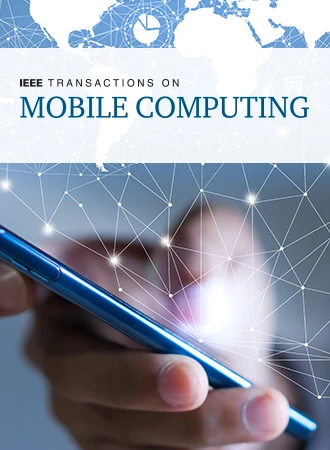层次索引检索驱动的无线网络意图翻译与LLM
IF 9.2
2区 计算机科学
Q1 COMPUTER SCIENCE, INFORMATION SYSTEMS
引用次数: 0
摘要
基于意图的网络(IBN)是一种新兴的网络管理概念,旨在通过自动化实现用户服务需求。IBN的核心是能够将用户意图转换为网络策略,从而支持自动化配置和管理。然而,IBN的应用一直受到自动化和智能相关挑战的限制。最近广泛采用的大型语言模型(LLM)在一定程度上缓解了这些问题。尽管如此,硬件的异构性和高动态网络仍然是IBN面临的重大挑战:(i)来自不同供应商的设备难以统一管理;(ii)很难使服务需求与迅速变化的网络状况保持一致。为了应对这些挑战,我们提出了LIT,这是一个带有手动指导的llm授权意图翻译框架。LIT结合了检索增强生成(RAG)来参考硬件手册并增强llm的生成结果。为了降低检索结果中的噪声,我们对通用的RAG流程进行了优化。此外,LIT引入了混合专家模型(MoE),通过综合多个专家模型的结果,根据网络状态调整参数值。实验表明,LIT缓解了IBN面临的挑战,与基线相比,F1得分提高了57.5%。本文章由计算机程序翻译,如有差异,请以英文原文为准。
Hierarchical Index Retrieval-Driven Wireless Network Intent Translation With LLM
Intent-Based Networking (IBN) represents an emerging network management concept that is designed to fulfill user service requirements through automation. At its core, IBN is capable of translating user intent into network policies, thereby enabling automated configuration and management. However, the application of IBN has been limited by challenges associated with automation and intelligence. The recent widespread adoption of Large Language Model (LLM) has partially mitigated these issues. Nonetheless, hardware heterogeneity and high dynamic networks remain significant challenges for IBN: (i) Devices from different vendors are challenging to manage uniformly; (ii) Aligning service demands with rapidly changing network status is difficult. To address these challenges, we propose LIT, a framework of LLM-empowered Intent Translation with manual guidance. LIT incorporates Retrieval-Augmented Generation (RAG) to reference hardware manuals and enhance the generation results of LLMs. To reduce noise from retrieval results, we optimized the general RAG process. Additionally, LIT introduces MoE (Mixture of Experts) to adjust parameter values according to network status by synthesizing results from multiple expert models. Experiments demonstrate that LIT alleviates the challenges faced by IBN, achieving a 57.5% improvement in F1 score compared to the baseline.
求助全文
通过发布文献求助,成功后即可免费获取论文全文。
去求助
来源期刊
CiteScore
12.90
自引率
2.50%
发文量
403
审稿时长
6.6 months
期刊介绍:
IEEE Transactions on Mobile Computing addresses key technical issues related to various aspects of mobile computing. This includes (a) architectures, (b) support services, (c) algorithm/protocol design and analysis, (d) mobile environments, (e) mobile communication systems, (f) applications, and (g) emerging technologies. Topics of interest span a wide range, covering aspects like mobile networks and hosts, mobility management, multimedia, operating system support, power management, online and mobile environments, security, scalability, reliability, and emerging technologies such as wearable computers, body area networks, and wireless sensor networks. The journal serves as a comprehensive platform for advancements in mobile computing research.

 求助内容:
求助内容: 应助结果提醒方式:
应助结果提醒方式:


